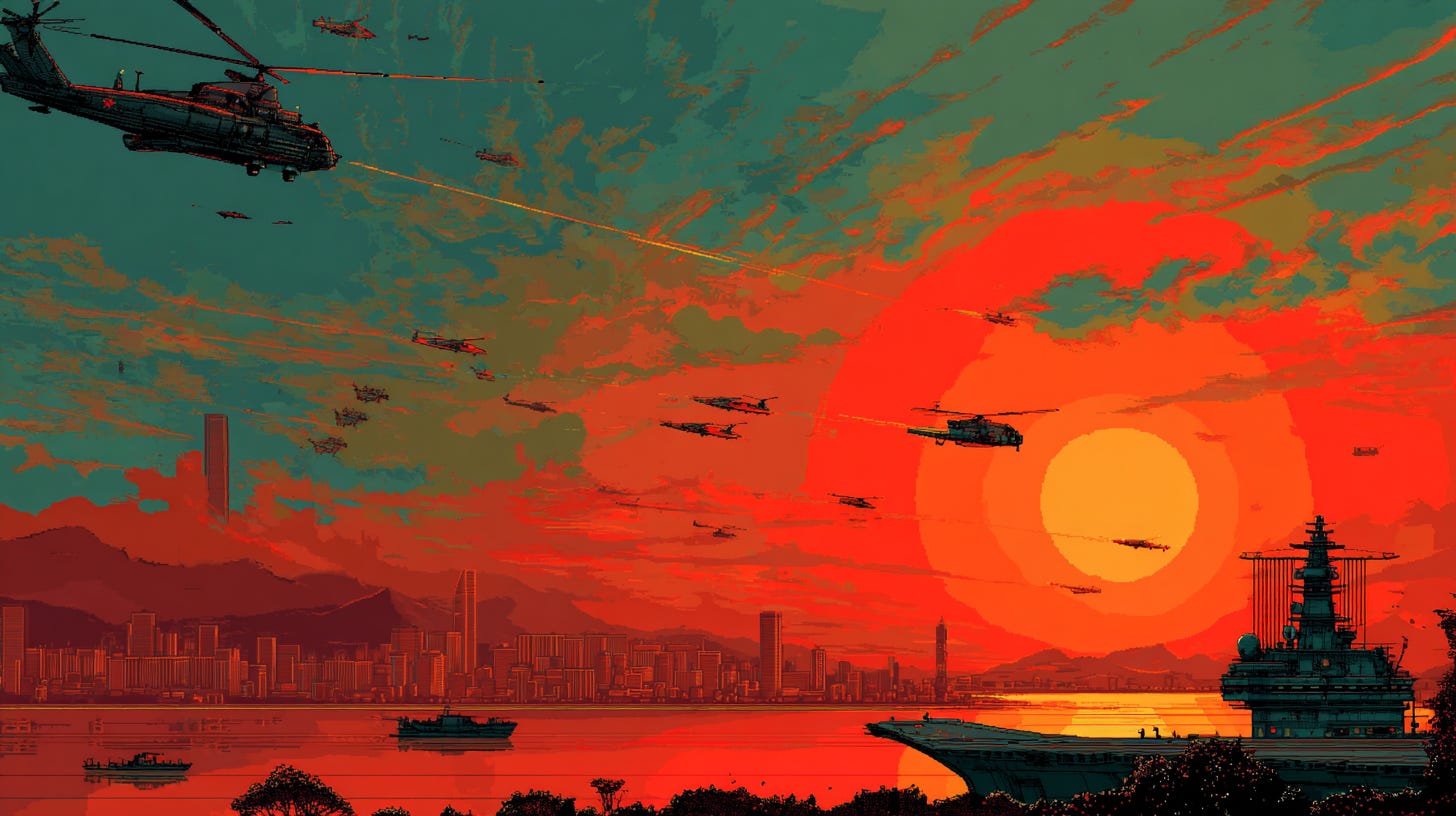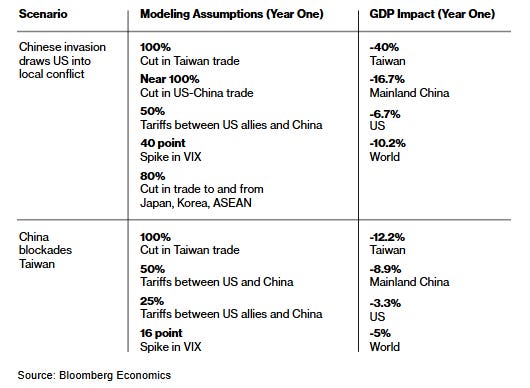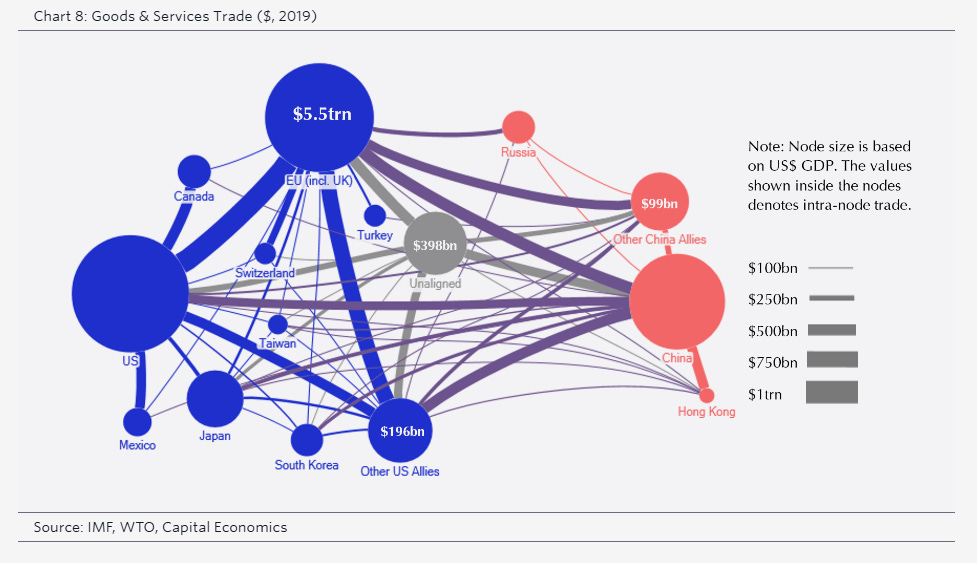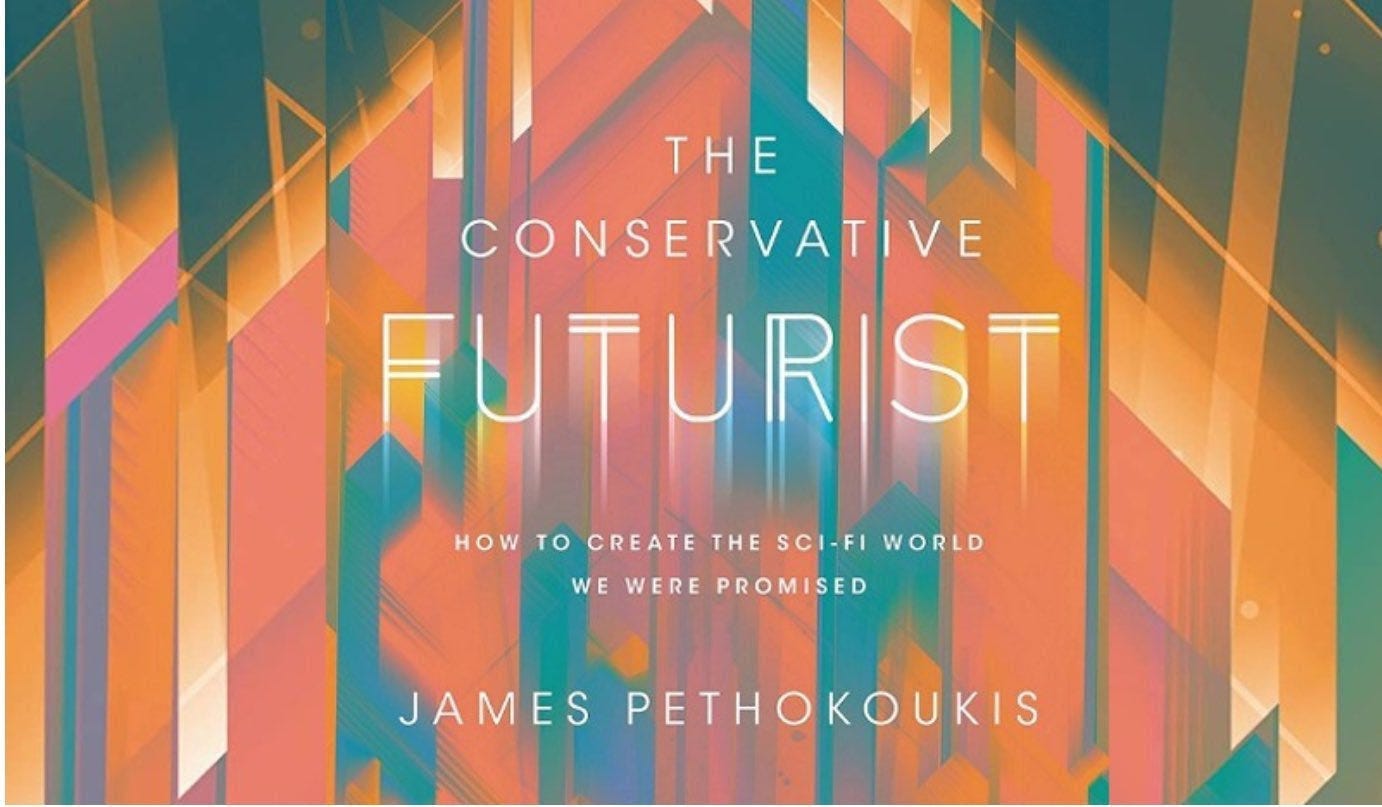🌫️ 🔮 The fog of war and the fog of the future
Throwback Thursday: How a US–China clash over Taiwan could shatter the global economy—and derail the technologies meant to save it
My fellow pro-growth/progress/abundance Up Wingers in the USA and around the world:
The “Technological Singularity, a moment of self-improving superintelligence, remains more science fiction than science. That, despite Silicon Valley’s billions chasing it. Still, it’s not far-fetched to picture a future where digital progress utterly outruns our understanding, where forecasting beyond that “technological event horizon” would be like asking a Neanderthal to imagine the internet.
Yet while the Singularity is still theoretical, another event horizon feels closer — and far more real: war over Taiwan. The fog of the future and the fog of war, it seems, may soon converge.
A Warring Twenties
AI promises faster productivity, cheaper goods, and the potential for a sustained economic upswing. But the 2020s could yet turn warring, not roaring, if tensions between China and Taiwan ignite. A 2022 analysis by Capital Economics sketched six escalating scenarios — from the seizure of an offshore islet to full-scale invasion — and estimated the economic pain each would inflict.
A minor provocation, such as seizing Kinmen or Matsu, would jolt markets but might not collapse global trade. A “quarantine” of Taiwan’s borders or a full blockade, however, would be devastating. Taiwan’s chipmaker, TSMC, produces more than nine-tenths of the world’s most advanced semiconductors. Cut those off, and the world’s digital economy would sputter.
Even a bloodless capitulation would cripple the island’s tech industry, as Western sanctions cut it off from essential tools and expertise. At the far end of the spectrum, a US–China shooting war would make Russia’s invasion of Ukraine look like a sideshow. China is 10 times more central to global trade than Russia — and nearly two-thirds of its exports go to the United States and its allies.1 Complete economic decoupling, mutual asset seizures, and supply-chain collapse would follow.
A Costly Clash
Christopher Neely of the St. Louis Fed has tried to quantify catastrophe. Drawing on wargames by the Center for Strategic and International Studies, he envisions a 2026 conflict in which China invades Taiwan, the U.S. intervenes, and Japan and Australia join the fight. The war lasts weeks, not months, but the toll is staggering — hundreds of aircraft, dozens of ships, and likely the destruction of Taiwan’s chip foundries.
Markets would convulse even before the first missile lands. Drawing on precedents from Pearl Harbor to 9/11, Neely estimates equities could plunge 10 to 15 percent within weeks as investors stampede into safe assets and volatility surges. Central banks would reach for the pandemic playbook — slashing rates, buying bonds, and flooding credit markets with liquidity.
The economic shock would be global. Semiconductor shortages would paralyze electronics, while Australian minerals, Japanese machinery, and American medical goods would all be snarled. Fiscal costs alone could hit hundreds of billions for each combatant.2 Bloomberg Economics puts the total damage near $10 trillion — about a tenth of global GDP.
Aftershocks
The pandemic may be the better precedent than past wars. COVID-19 revealed how fragile supply chains can be and how swiftly fiscal and monetary stimulus can stoke inflation. A Taiwan conflict would replicate those dynamics in concentrated form — trade halted across the western Pacific, surging government spending, ballooning debt, and, eventually, higher prices. The world would emerge poorer, riskier, and more militarized.
Longer-term damage could be worse still. A hard decoupling between China and the West would be catastrophic for global innovation, undermining scientific collaboration and knowledge sharing that have accelerated technological progress. Forcing completely parallel innovation ecosystems between China and the West would wastefully duplicate research efforts and dramatically slow breakthroughs in critical fields like AI.
A Singular Warning
A war over Taiwan would not only devastate the world economy; it could also derail the very technologies that promise to lift it. Consider William Gibson’s The Peripheral, where a series of very bad events — from climate disasters to cascading pandemics to limited nuclear war — devastate most of humanity. Yet amid this collapse, technological innovation accelerates dramatically in AI, energy, and robotics.3 Still, 80 percent of humanity dies. Too little, too late.
While Gibson may have had different intentions, the novel serves as a cautionary tale about postponing technological development. You never know when disaster might strike.
This piece was adapted from a longer essay published on Nov. 11, 2024.
The economic damage from hard decoupling would be greater for China – nearly two thirds of its exports go to the United States and its allies, compared with only 15 percent of exports from the US bloc to China and its allies. ... There is a similar disparity for imports. But the shock to economies in the West would nonetheless be severe. China is an order of magnitude more important in the global trading system than Russia.
Even a short-term conflict over Taiwan would produce enormous human costs, as well as serious long-term economic consequences, including long-term disruption to trade relations, destruction of much human and physical capital, and potentially a costly long-term arms buildup to deter further wars.
“With everything stumbling deeper into a ditch of shit, history itself become a slaughterhouse, science had started popping. Not all at once, no one big heroic thing, but there were cleaner, cheaper energy sources, more effective ways to get carbon out of the air, new drugs that did what antibiotics had done before, nanotechnology that was more than just car paint that healed itself or camo crawling on a ball cap. Ways to print food that required much less in the way of actual food to begin with. So everything, however deeply fucked in general, was lit increasingly by the new, by things that made people blink and sit up, but then the rest of it would just go on, deeper into the ditch.”
On sale everywhere The Conservative Futurist: How To Create the Sci-Fi World We Were Promised





